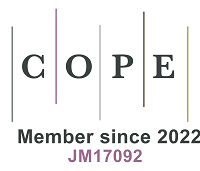REFERENCES
1. Alaee M, Arias P, Sjödin A, Bergman A. An overview of commercially used brominated flame retardants, their applications, their use patterns in different countries/regions and possible modes of release. Environ Int 2003;29:683-9.
2. Guardia MJ, Hale RC, Harvey E. Detailed polybrominated diphenyl ether (PBDE) congener composition of the widely used penta-, octa-, and deca-PBDE technical flame-retardant mixtures. Environ Sci Technol 2006;40:6247-54.
3. Rahman F, Langford KH, Scrimshaw MD, Lester JN. Polybrominated diphenyl ether (PBDE) flame retardants. Sci Total Environ 2001;275:1-17.
5. Alshemmari H. Inventories and assessment of POPs in the State of Kuwait as a basis for Stockholm Convention implementation. Emerg Contam 2021;7:88-98.
6. Li Y, Chen L, Wen ZH, et al. Characterizing distribution, sources, and potential health risk of polybrominated diphenyl ethers (PBDEs) in office environment. Environ Pollut 2015;198:25-31.
7. Sun J, Wang Q, Zhuang S, Zhang A. Occurrence of polybrominated diphenyl ethers in indoor air and dust in Hangzhou, China: level, role of electric appliances, and human exposure. Environ Pollut 2016;218:942-9.
8. Betts KS. Hand-me-down hazard: flame retardants in discarded foam products. Environ Health Perspect 2015;123:A56-63.
9. Cao Z, Xu F, Li W, et al. Seasonal and particle size-dependent variations of hexabromocyclododecanes in settled dust: implications for sampling. Environ Sci Technol 2015;49:11151-7.
10. Ding N, Wang T, Chen SJ, et al. Brominated flame retardants (BFRs) in indoor and outdoor air in a community in Guangzhou, a megacity of southern China. Environ Pollut 2016;212:457-63.
11. Zheng X, Xu F, Chen K, et al. Flame retardants and organochlorines in indoor dust from several e-waste recycling sites in South China: composition variations and implications for human exposure. Environ Int 2015;78:1-7.
12. Iwegbue CM, Eyengho SB, Egobueze FE, et al. Polybrominated diphenyl ethers and polychlorinated biphenyls in indoor dust from electronic repair workshops in southern Nigeria: implications for onsite human exposure. Sci Total Environ 2019;671:914-27.
13. Birnbaum LS, Staskal DF. Brominated flame retardants: cause for concern? Environ Health Perspect 2004;112:9-17.
14. Jaspers V, Covaci A, Maervoet J, et al. Brominated flame retardants and organochlorine pollutants in eggs of little owls (Athene noctua) from Belgium. Environ Pollut 2005;136:81-8.
15. Law K, Halldorson T, Danell R, et al. Bioaccumulation and trophic transfer of some brominated flame retardants in a Lake Winnipeg (Canada) food web. Environ Toxicol Chem 2006;25:2177-86.
16. Ueno D, Isobe T, Ramu K, et al. Spatial distribution of hexabromocyclododecanes (HBCDs), polybrominated diphenyl ethers (PBDEs) and organochlorines in bivalves from Japanese coastal waters. Chemosphere 2010;78:1213-9.
17. Polder A, Venter B, Skaare JU, Bouwman H. Polybrominated diphenyl ethers and HBCD in bird eggs of South Africa. Chemosphere 2008;73:148-54.
18. Shaw SD, Berger ML, Brenner D, Kannan K, Lohmann N, Päpke O. Bioaccumulation of polybrominated diphenyl ethers and hexabromocyclododecane in the northwest Atlantic marine food web. Sci Total Environ 2009;407:3323-9.
19. McKinney MA, Letcher RJ, Aars J, et al. Flame retardants and legacy contaminants in polar bears from Alaska, Canada, East Greenland and Svalbard, 2005-2008. Environ Int 2011;37:365-74.
20. Vorkamp K, Rigét FF, Bossi R, Dietz R. Temporal trends of hexabromocyclododecane, polybrominated diphenyl ethers and polychlorinated biphenyls in ringed seals from East Greenland. Environ Sci Technol 2011;45:1243-9.
21. Rawn DF, Sadler A, Quade SC, et al. Brominated flame retardants in Canadian chicken egg yolks. Food Addit Contam Part A Chem Anal Control Expo Risk Assess 2011;28:807-15.
22. Sørmo EG, Salmer MP, Jenssen BM, et al. Biomagnification of polybrominated diphenyl ether and hexabromocyclododecane flame retardants in the polar bear food chain in Svalbard, Norway. Environ Toxicol Chem 2006;25:2502-11.
23. Tue NM, Sudaryanto A, Minh TB, et al. Accumulation of polychlorinated biphenyls and brominated flame retardants in breast milk from women living in Vietnamese e-waste recycling sites. Sci Total Environ 2010;408:2155-62.
24. Kalantzi OI, Geens T, Covaci A, Siskos PA. Distribution of polybrominated diphenyl ethers (PBDEs) and other persistent organic pollutants in human serum from Greece. Environ Int 2011;37:349-53.
25. Glynn A, Lignell S, Darnerud PO, et al. Regional differences in levels of chlorinated and brominated pollutants in mother’s milk from primiparous women in Sweden. Environ Int 2011;37:71-9.
26. Malarvannan G, Isobe T, Covaci A, Prudente M, Tanabe S. Accumulation of brominated flame retardants and polychlorinated biphenyls in human breast milk and scalp hair from the Philippines: levels, distribution and profiles. Sci Total Environ 2013;442:366-79.
27. Malarvannan G, Dirinck E, Dirtu AC, et al. Distribution of persistent organic pollutants in two different fat compartments from obese individuals. Environ Int 2013;55:33-42.
28. Ryan JJ, Rawn DF. The brominated flame retardants, PBDEs and HBCD, in Canadian human milk samples collected from 1992 to 2005; concentrations and trends. Environ Int 2014;70:1-8.
29. Rawn DF, Gaertner DW, Weber D, Curran IH, Cooke GM, Goodyer CG. Hexabromocyclododecane concentrations in Canadian human fetal liver and placental tissues. Sci Total Environ 2014;468-9:622-9.
30. Rawn DFK, Ryan JJ, Sadler AR, et al. Brominated flame retardant concentrations in sera from the Canadian Health Measures Survey (CHMS) from 2007 to 2009. Environ Int 2014;63:26-34.
31. Antignac JP, Main KM, Virtanen HE, et al. Country-specific chemical signatures of persistent organic pollutants (POPs) in breast milk of French, Danish and Finnish women. Environ Pollut 2016;218:728-38.
32. Wemken N, Drage DS, Cellarius C, et al. Emerging and legacy brominated flame retardants in the breast milk of first time Irish mothers suggest positive response to restrictions on use of HBCDD and Penta- and Octa-BDE formulations. Environ Res 2020;180:108805.
33. Zhao X, Shi Z. Legacy brominated flame retardants in human milk from the general population in Beijing, China: biomonitoring, temporal trends from 2011 to 2018, and nursing infant’s exposure assessment. Chemosphere 2021;285:131533.
34. Meironyté D, Norén K, Bergman A. Analysis of polybrominated diphenyl ethers in Swedish human milk. a time-related trend study, 1972-1997. J Toxicol Environ Health A 1999;58:329-41.
35. Norén K, Meironyté D. Certain organochlorine and organobromine contaminants in Swedish human milk in perspective of past 20-30 years. Chemosphere 2000;40:1111-23.
36. Meironyté Guvenius D, Aronsson A, Ekman-Ordeberg G, Bergman A, Norén K. Human prenatal and postnatal exposure to polybrominated diphenyl ethers, polychlorinated biphenyls, polychlorobiphenylols, and pentachlorophenol. Environ Health Perspect 2003;111:1235-41.
37. Daniels JL, Pan IJ, Jones R, et al. Individual characteristics associated with PBDE levels in U.S. human milk samples. Environ Health Perspect 2010;118:155-60.
38. Toms LML, Guerra P, Eljarrat E, et al. Brominated flame retardants in the Australian population: 1993-2009. Chemosphere 2012;89:398-403.
39. Law RJ, Covaci A, Harrad S, et al. Levels and trends of PBDEs and HBCDs in the global environment: status at the end of 2012. Environ Int 2014;65:147-58.
40. Feiteiro J, Mariana M, Cairrão E. Health toxicity effects of brominated flame retardants: from environmental to human exposure. Environ Pollut 2021;285:117475.
41. Renzelli V, Gallo M, Morviducci L, et al. Polybrominated diphenyl ethers (PBDEs) and human health: effects on metabolism, diabetes and cancer. Cancers 2023;15:4237.
42. Darnerud PO, Eriksen GS, Jóhannesson T, Larsen PB, Viluksela M. Polybrominated diphenyl ethers: occurrence, dietary exposure, and toxicology. Environ Health Perspect 2001;109 Suppl 1:49-68.
44. World Health Organization. Infant and young child feeding. 2023. Available from: https://www.who.int/news-room/fact-sheets/detail/infant-and-young-child-feeding. [Last accessed on 5 Jun 2024].
45. Victora CG, Bahl R, Barros AJD, et al; Lancet Breastfeeding Series Group. Breastfeeding in the 21st century: epidemiology, mechanisms, and lifelong effect. Lancet 2016;387:475-90.
46. Arbuckle TE, Fraser WD, Fisher M, et al. Cohort profile: the maternal-infant research on environmental chemicals research platform. Paediatr Perinat Epidemiol 2013;27:415-25.
47. Statistics Canada. Canadian Community Health Survey - annual component (CCHS). Available from: https://www23.statcan.gc.ca/imdb/p2SV.pl?Function=getSurvey&Id=144170#a2. [Last accessed on 5 Jun 2024].
48. Rawn DFK, Sadler AR, Casey VA, et al. Dioxins/furans and PCBs in Canadian human milk: 2008-2011. Sci Total Environ 2017;595:269-78.
49. Rawn DFK, Corrigan C, Ménard C, Sun WF, Breton F, Arbuckle TE. Novel halogenated flame retardants in Canadian human milk from the MIREC study (2008-2011). Chemosphere 2024;350:141065.
50. Lignell S, Aune M, Darnerud PO, Cnattingius S, Glynn A. Persistent organochlorine and organobromine compounds in mother’s milk from Sweden 1996-2006: compound-specific temporal trends. Environ Res 2009;109:760-7.
51. Darnerud PO, Lignell S, Aune M, et al. Time trends of polybrominated diphenylether (PBDE) congeners in serum of Swedish mothers and comparisons to breast milk data. Environ Res 2015;138:352-60.
52. Siddique S, Xian Q, Abdelouahab N, et al. Levels of dechlorane plus and polybrominated diphenylethers in human milk in two Canadian cities. Environ Int 2012;39:50-5.
53. Secretariat of the Stockholm Convention. The 12 initial POPs under the Stockholm Convention. Available from: http://chm.pops.int/TheConvention/ThePOPs/The12InitialPOPs/tabid/296/Default.aspx. [Last accessed on 5 Jun 2024].
54. Zhang J, Chen L, Xiao L, Ouyang F, Zhang QY, Luo ZC. Polybrominated diphenyl ether concentrations in human breast milk specimens worldwide. Epidemiology 2017;28 Suppl 1:S89-97.
55. Jung AM, Beitel SC, Gutenkunst SL, et al. Excretion of polybrominated diphenyl ethers and AhR activation in breastmilk among firefighters. Toxicol Sci 2023;192:223-32.
56. Schreder E, Zheng G, Sathyanarayana S, Gunaje N, Hu M, Salamova A. Brominated flame retardants in breast milk from the United States: first detection of bromophenols in U.S. breast milk. Environ Pollut 2023;334:122028.
57. Souza MCO, Devóz PP, Ximenez JPB, Bocato MZ, Rocha BA, Barbosa F. Potential health risk to Brazilian infants by polybrominated diphenyl ethers exposure via breast milk intake. Int J Environ Res Public Health 2022;19:11138.
58. Torres-Moreno AC, Mejia-Grau K, Puente-DelaCruz L, et al. Polybrominated diphenyl ethers (PBDEs), polychlorinated biphenyls (PCBs), organochlorine pesticides (OCPs) in human breast milk from Colombia: a probabilistic risk assessment approach. Chemosphere 2023;339:139597.
59. Parizek O, Gramblicka T, Parizkova D, et al. Assessment of organohalogenated pollutants in breast milk from the Czech Republic. Sci Total Environ 2023;871:161938.
60. Lin Y, Feng C, Le S, et al. Infant exposure to PCBs and PBDEs revealed by hair and human milk analysis: evaluation of hair as an alternative biomatrix. Environ Sci Technol 2022;56:15912-9.
61. Fujii Y, Ito Y, Harada KH, Hitomi T, Koizumi A, Haraguchi K. Regional variation and possible sources of brominated contaminants in breast milk from Japan. Environ Pollut 2012;162:269-74.







